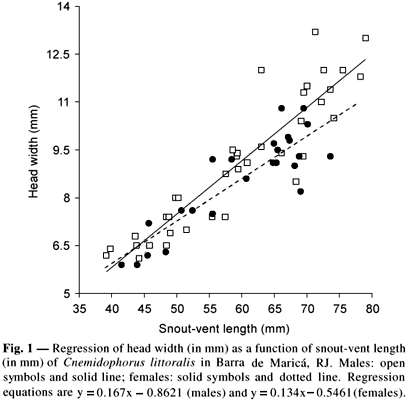We investigated the feeding habits of the teiid lizard Cnemidophorus littoralis in the markedly seasonal habitat of Restinga da Barra de Maricá (22º57'S, 43º50'W), Rio de Janeiro State, Brazil, to evaluate to what extent its diet is ontogenetically, sexually, and/or seasonally conservative. Lizard stomach contents were analyzed, identified, counted, estimated for volume (in mm³), and grouped in four classes (active, sedentary, and clumped preys, and plant material). The relative contribution of each food class to the total prey volume consumed by adult males and females and juveniles was compared in three ways: between juveniles and adults, sexes, and seasons (wet and dry). Sexual dimorphism in head size was tested by comparing head width and jaw length using analysis of covariance (ANCOVA). Isopterans were the most important prey item, occurring in 93% of the lizard stomachs examined and corresponding to 96.4% of total prey content and 69.7% of total prey volume. They occurred in high frequencies in the stomachs of C. littoralis throughout all study months. We found no sexual, ontogenetic, or seasonal differences in C. littoralis diet although the sexes differed significantly in head width. We concluded that isopterans are the main item in the diet of C. littoralis in Restinga da Barra de Maricá, both for juveniles and adults. The lack of seasonal, sexual, or ontogenetic variation in its diet results from the massive consumption of these insects. Isopterans are small, occur in clumps, and are available year-round, and thus are an advantageous food item for the active forager C. littoralis. We also found sexual dimorphism in the head size of C. littoralis: males have wider heads than females. This dimorphism, however, does not seem to be related with the diet of the species, and is probably a result of sexual selection.
lizard; Teiidae; restinga; conservative diet; sexual dimorphism



